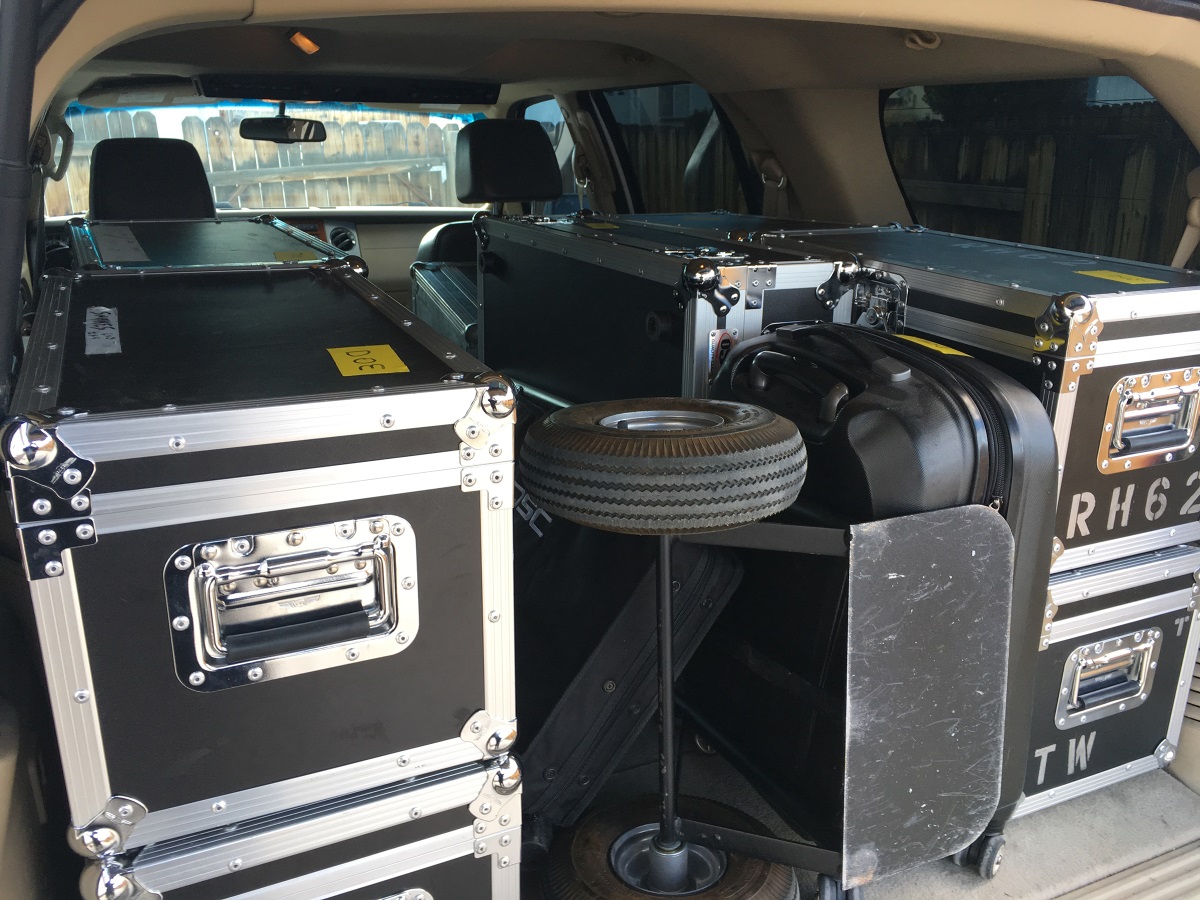
Additional Steps
Once all gear and spares are pulled and checked, the truck loader figures out the best way to safely pack it all into a truck.
To secure the gear in our box trucks we prefer “E Track” rails, spaced at different heights along the truck’s front and side walls. It affords the most flexibility for tie down points, offering an attachment point about every 2 inches along the rail. Straps made for E Track can clip directly into the track, and the tracks can also accept load bars as well as other fittings like hooks that can stow rope or cables.
It’s also important to periodically check all track and fittings in a truck/trailer to make sure they’re secure. Once I drove a truck around a curve and heard a trunk roll across the box.

Pulling over to check it out, I found that the screws holding the track had vibrated loose over time and when enough screws had vibrated out, the track came loose from the wall, setting the trunk free. I’ve since added an “E Track and Load Tie Down Rings” inspection line to our PM (preventative maintenance) schedule for trucks.
All transport should get PM during the year to make sure everything is in good working condition. We service our trucks per the manufacturer’s recommendation. For smaller shows we have a van/SUV to deliver the rig to the gig. It consumes less fuel while saving wear and tear on the bigger trucks.
Trailers are also a great way to transport gear, and if you already own a quality tow vehicle like an SUV or a pickup, it’s an economical solution. Plus, in many neighborhoods they can be parked on residential property, with smaller ones even fitting inside a garage.
There are three basic options for getting gear in and out of delivery vehicles. It may need to be lifted by hand; larger trucks may have a pull-out ramp; and the rear door of larger trailers may fold down into a ramp.
Another option is a lift gate for a truck, which is really handy for heavy items like road trunks so the crew doesn’t hurt themselves pushing the heavy stuff up a ramp on load-out after a long gig. A downside is that lift gates weigh a bit more than ramps, decreasing the available cargo weight that can be put in the truck. Another downside is that if the ground at the venue is not reasonably flat, the lift gate becomes unhelpful and potentially dangerous.
Some gear can be stored in a truck or trailer when not in use, which is fine but make sure that very cold weather is not going to cause damage. Also, electronic equipment must be given time to acclimate to the warmer temperature in a room before plugging it in and (especially) turning it on.
Wheels Are A Beautiful Thing
A popular saying at my company is “wheels are our friends.” Small road cases get stacked on hand-trucks or dolly boards (a.k.a., “skate boards”), while larger cases have their own wheels. Carts can also be used for loose items. Basically, we want to minimize the trips from the truck and eliminate the need to have to carry any item.
The most-used implement for moving gear are hand trucks. They come in a variety of styles with some having a lightweight metal aluminum frame and others sporting a steel frame. The biggest difference I find between them is the wheel type – some use inflatable tires and others have solid tires. My preference is the pneumatic type because they provide a smoother ride for the equipment. Some hand trucks can also be configured as rolling carts.
No matter the style or type, hand trucks should also be treated to PM a few times a year. Check the tires, grease any bearings and check for broken welds or loose fasteners.
Dolly boards are also quite useful – my company has a few large subwoofers that don’t have wheels. We simply place each on a dolly board and secure them with truck straps so they easily roll up and down a ramp or across a convention center without worrying about slippage.
Rolling carts can also be useful, particularly for smaller items. I can’t count how many times I’ve seen A/V companies use a rolling cart to get a portable PA system and video gear from their storage area to a meeting room. In the meeting room, the cart is then draped and used as the projector stand or stand for the system’s console/mixer.
These transport vehicles also need regularly scheduled PM as well. Check the casters and lubricate any bearings as necessary. All wood and plastic needs to be inspected for cracks or breakage that could lead to the unit failing during use.
